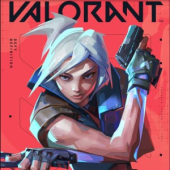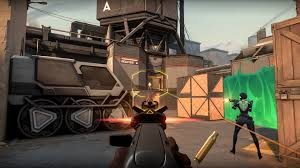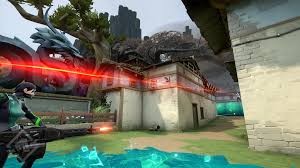VALORANT Review: Precision, Strategy, and Style in Riot's Tactical Shooter
Few games in the competitive shooter genre have had an impact as explosive as VALORANT. Developed by Riot Games, the title has become a staple in esports, dominating Twitch streams, YouTube gameplay highlights, and global tournament circuits. Released in 2020, it merges the high-stakes tactics of traditional shooters with the unique abilities and flair of character-driven play, forging something both familiar and refreshingly new.
While some may have originally approached VALORANT as a Counter-Strike clone with special powers, it’s quickly proven to be much more. It brings together mechanical skill, strategic execution, and tight team dynamics into a free-to-play experience that doesn’t sacrifice polish. From tight map design to nuanced agent abilities, the game is engineered to reward both sharp reflexes and smart plays.
The Gameplay Loop: Tactics Meet Abilities
VALORANT’s structure will feel instantly recognizable to FPS veterans. It operates around a round-based format—teams alternate between attacking and defending, with the main objective to plant or defuse a device (the "spike"). Each round, players earn credits based on performance and spend them on weapons, armor, and agent-specific abilities.
But here’s where things get interesting: every agent has a distinct skill set. These range from smokes and flashes to teleportation and walls of flame. Unlike many shooters where gunplay alone dictates the flow, here, your toolkit matters just as much as your aim. Learning when to use abilities, combine them with teammates’ tools, and manipulate the battlefield can be the difference between a close loss and a decisive win.
No two matches ever play out the same. You might download a new agent one day and completely change your approach to certain maps the next. The experience stays dynamic, which is a key reason many players continue to play for hundreds of hours.
Graphics, Sound, and Style
VALORANT isn't chasing photorealism. Instead, it features a clean, stylized look that balances clarity with aesthetic appeal. Characters are sharply designed, environments are rich in detail without being cluttered, and abilities have just enough visual flair to communicate function without overwhelming your vision.
Sound design, however, is where the game really sets itself apart. Footsteps, reloads, and ability activations are critical audio cues. A good headset becomes more than a preference—it’s a necessity. Sound carries through walls, across rooms, and up vertical levels, letting you piece together the opponent’s movement with precision if you’re paying close attention.
Agent Diversity and Meta Evolution
VALORANT’s growing agent roster is arguably one of its strongest aspects. Every character not only looks and sounds different but radically alters how you play. Whether you prefer lurking in the shadows, controlling space, or taking the lead with aggressive plays, there’s an agent for you.
Meta shifts are constant, thanks to Riot’s regular updates. This means certain agents or playstyles will rise and fall in strength over time, ensuring no single strategy dominates for long. For players who thrive on adaptation and discovery, this ever-changing environment is both a challenge and a thrill.
Community, Esports, and Longevity
Riot’s commitment to community support and competitive integrity is clear. With a robust anti-cheat system in place from day one and regular updates that fine-tune weapon balances and map rotations, the developer has established trust with players. Community tools and matchmaking improvements also make it easier for newcomers to install the game and quickly find a match at their skill level.
On the esports side, VALORANT has become a global force. Riot has built an impressive tournament infrastructure with franchised teams, seasonal competitions, and regional qualifiers. Even casual players benefit, as they can stream major matches, learn new strategies, and feel connected to a larger scene.
Performance and Accessibility
VALORANT is remarkably well-optimized, allowing it to run smoothly on a wide range of systems. Whether you play on a budget laptop or a high-end gaming rig, the experience remains stable. Riot made smart decisions here—the lower system requirements open the game to more users globally and help grow the community.
Accessibility features are improving as well, with options for colorblind modes, simplified HUD layouts, and alternate control schemes. While the game doesn’t currently support consoles or mobile natively, some players use emulators to stream and play on unofficial platforms. Still, for now, PC remains the dominant way to enjoy VALORANT.
Why It Works
At its core, VALORANT succeeds because it understands what makes tactical shooters compelling—then expands on that formula. Rather than rely solely on twitch reaction or gear superiority, it invites you to play smarter. Flanking at the right moment, combining agent abilities, and outmaneuvering opponents matter just as much as your shot placement.
It’s not just a shooter. It’s a chess match with weapons, and for those who embrace its complexity, it’s an experience that rewards time, effort, and strategic growth.
How to download VALORANT and start playing
VALORANT is free to download directly from Riot Games' official website. Once registered with a Riot account, users can install the game launcher and access the latest version immediately. The title is not available on Steam or Epic Games Store.
VALORANT is only supported on Windows PC. It does not officially run on macOS, Linux, Android, iOS, or gaming consoles. However, some users access it through cloud services or emulators, though these are not officially supported and may introduce latency or technical issues.
To install, simply sign up on Riot's site, download the installer, and follow the setup instructions. Once installed, updates will be managed through the Riot client.
Minimum system requirements include Windows 7/8/10 (64-bit), 4GB RAM, Intel Core 2 Duo E8400 CPU, and Intel HD 3000 GPU. A stable internet connection is also required to play.
Cheats and mods are strictly prohibited. Riot uses Vanguard, a custom anti-cheat system that runs in the background, so any unauthorized software can result in bans.
VALORANT cannot be easily played in restricted environments such as schools or workplaces due to firewalls or admin blocks. VPNs and mobile hotspots are sometimes used to bypass restrictions, but performance may vary and access is not guaranteed.









